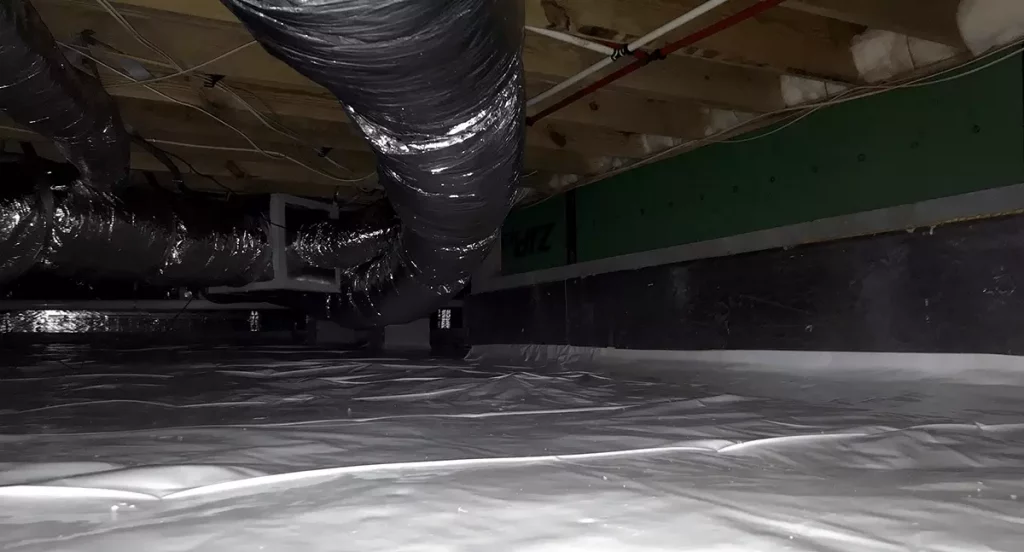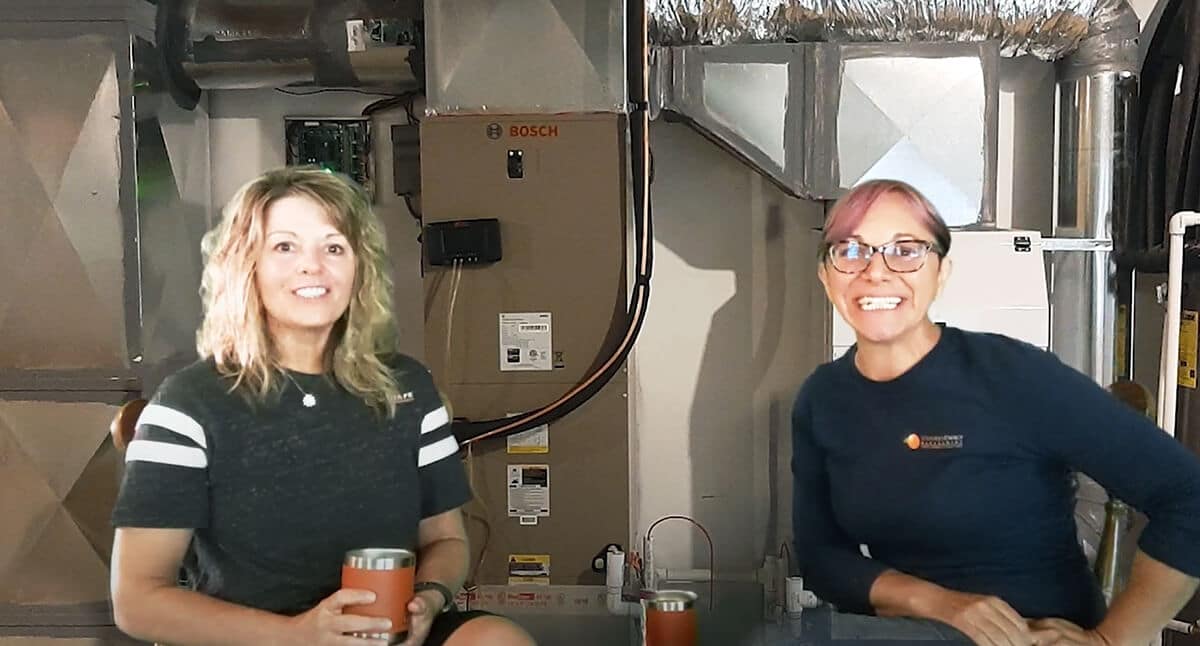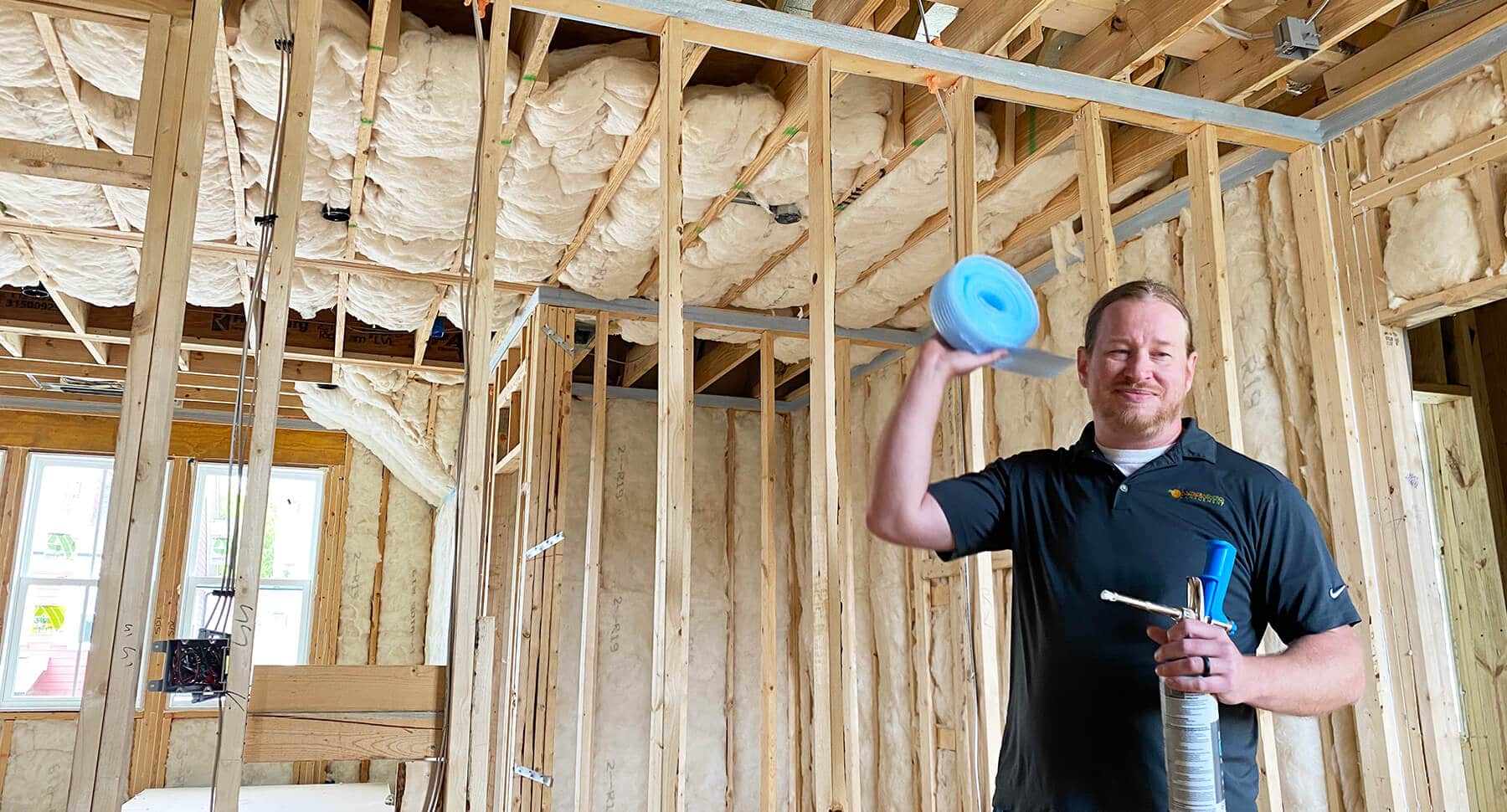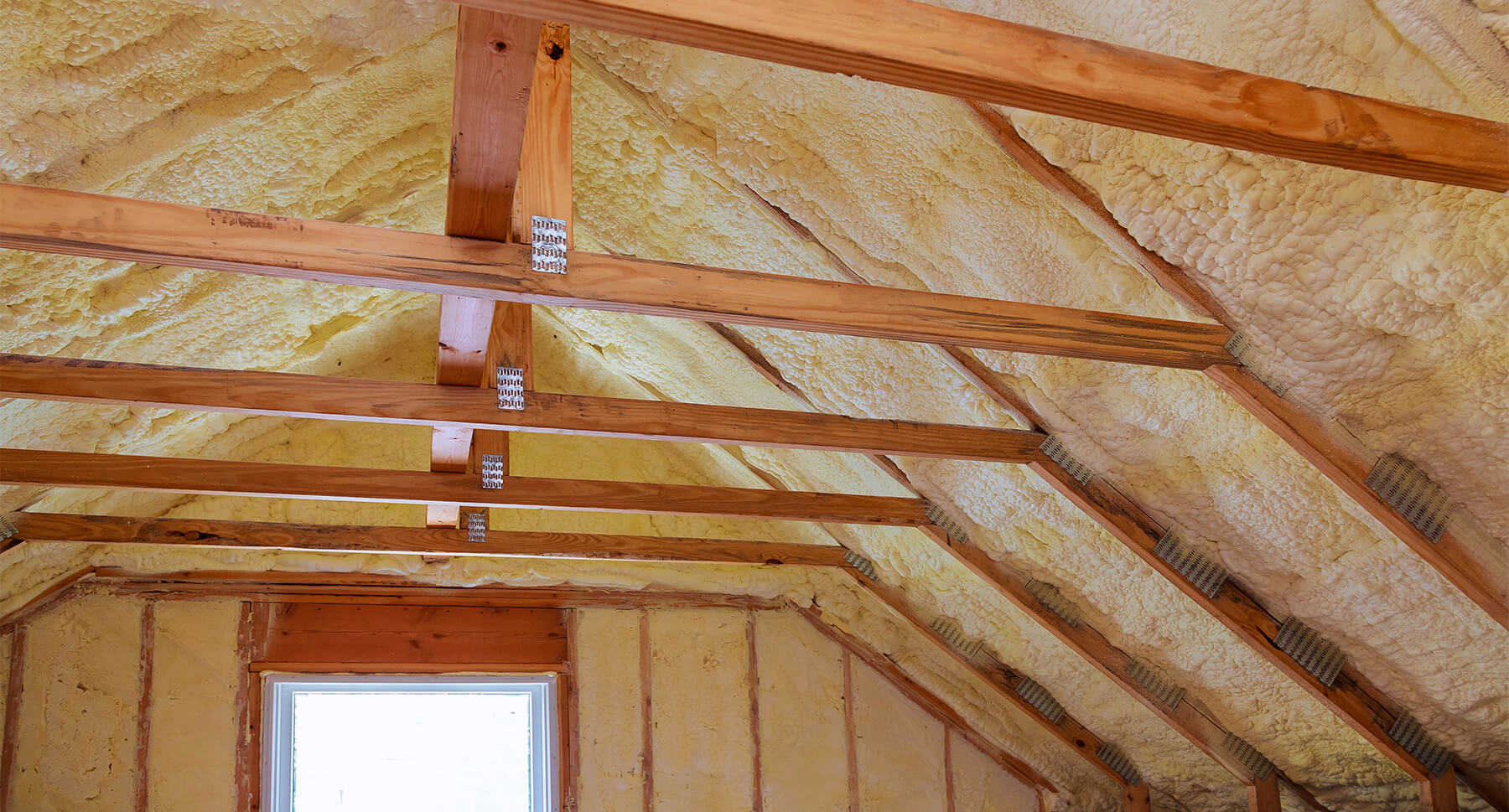Topics in this Article
TOPIC 01
Vented vs Sealed Crawl Spaces
Let’s be real — not many of us invite our friends over and say, “let’s go check out the crawlspace.” They are areas that are historically dark, dank, and full of mold and critters. Have you ever seen a camel cricket? It’s enough to make you never want to visit your crawlspace again.

So what is the issue and how can we turn the crawlspace from a dungeon of doom into a clean, healthy environment for our home and air exchange systems?
The main issue with crawl spaces in North Carolina is moisture. A damp crawl space can be a breeding ground for issues like mold, pests, rot, and high energy bills. Because our heating and cooling systems are often located in the crawl space, the air in our homes can be polluted by the conditions of the crawl space.
An unhealthy crawl space can exacerbate conditions such as asthma or allergies, resulting in unhealthy people. Studies have shown that high moisture levels in vented crawl spaces in the Southeast were linked to high mold counts inside the living space.
Turns out, keeping a vented crawl space dry in North Carolina is really hard which is why we recommend a sealed crawl space strategy.
But what about opening and closing crawl space vents?
If you have a vented crawl space, the original guidance for vents was to close the vents in the spring when you start using the AC and open vents in the fall when you switch the heat back on. Unfortunately, this crawl space strategy just doesn’t cut it when we consider the impact of a year-round humid climate in North Carolina. Through building science, we can see the true reasons that vented crawl spaces are so troublesome in the Southeast. Spoiler alert — it’s about more than just opening and closing the vents.
Why vented crawl spaces fail to stay dry:
Outdoor air is wet – Vents were originally put in crawlspaces to provide a drying mechanism, intended to exchange air between the outdoors and the air in the crawl. But in good ol’ humid NC, the moisture content of the outside air often exceeds that of the crawlspace air, so by venting the crawl we are actually making it wetter.
The ground is wet – Moisture in a crawl space is not only in the air but also in the ground. While many vented crawl spaces do have some type of vapor barrier installed, it is often thin and not secured to the walls or foundation piers. Over time this vapor barrier rips, and the gaps from incomplete coverage allow ground moisture to accumulate, increasing the moisture content of the crawl space air. In areas where the groundwater table level is high, this problem is even worse.
Your ducts are wet – With excessive moisture in both the air and the ground, conditions are perfect for “rain”. The risk of condensation on any cool surface and accumulating bulk moisture in the crawl space only adds to mold, rot, and flooring issues. Crawl spaces mainly exist as great areas to locate plumbing and heating and cooling equipment, which often have metal surfaces. While exacerbated in the summer when we are running cool air through our HVAC systems, condensation has been found on system and framing members even in the winter.
Pro Tip
Be careful what you store in a crawl space
It is also advisable not to use your crawlspace for the storage of any potentially hazardous or noxious chemicals such as paint or gasoline. Even in a well-air sealed house, there is often connectivity between the air in the home and the crawlspace. Don’t store any chemicals in the crawlspace that you would not store inside of your home.
TOPIC 02
Benefits of a Sealed Crawl Space
Sealed crawl spaces create a much friendlier environment for you & your home. There are many benefits to having a sealed crawl space, especially in our humid North Carolina climate. These are the top 3 benefits of a sealed crawl space:
01. Reduced Energy Consumption + Costs
From an energy standpoint, since all your ducts are in a nice conditioned environment, rather than an unconditioned crawl space or attic, you’re getting a lot of benefits. If you have your ducts in an unconditioned space, they’re fighting the outdoor air temperature while trying to condition the air that’s going into a house, which causes your equipment to work harder.
02. Moisture Management
Moisture management is one of the number one issues we face in North Carolina. (More on moisture management in the humid southeast.) Sealing a crawl space offers the ideal strategy for starting at the ground up in managing humidity and the moisture coming through the ground to the building structure. Less moisture means less risk to the structure, which creates a much friendlier environment for your building structure.
03. Healthier Indoor Air Quality
Believe it or not, air entering the house can come up through the crawl space, so by managing the air quality in that space, you’re contributing to the indoor air quality inside the home.
Common Questions
Should I use a dehumidifier in my crawl space?
So long as you’ve thoroughly air sealed the crawl, are supplying adequate supply air, and are monitoring moisture levels an active dehumidification system shouldn’t be necessary. Should you see levels spike or have challenges with maintaining healthy humidity levels a dehumidification system might be something you’d want to explore.
TOPIC 03
All the right components work together to create a properly sealed crawl space!
Here are the components to creating a properly sealed crawl space:
- Moisture Barrier
- Thermal Barrier
- Drainage Strategy
- Supply Conditioned Air or Mechanical Dehumidification
Drainage Strategy
By grading to the lowest point and adding a drain (like a French Drain), we can provide a drainage path for any water that gets in the crawlspace. This is a critical failsafe should a leak occur.
Supply Conditioned Air or Mechanical Dehumidification
Adding conditioned air to the space regulates the temperature but more importantly, it creates positive pressure, which keeps vapor from coming in. Air and moisture want to move from high to low pressure so think of the space like an inflated balloon.
Mechanical dehumidification (dehumidifier) is the alternative to supply air. As mentioned above you don’t need both, but you need one of the two. A dehumidifier offers more control of humidity levels.
TOPIC 04
How will a sealed crawl space help with building programs and incentives?
Closed crawl spaces will have the lowest year round cost of operation when compered to a vented crawl. A HERS score can drop about 3 HERS points when changing a vented to a closed crawl in the average 2,000 sq ft home (assuming ductwork moves to a conditioned space).
What's Next?
Questions about your crawl space strategy?
As with most things in life, the devil is in the details — especially when it comes to crawl space encapsulation. Having a third-party energy rater inspect the installation and performance test the home helps ensure all the components are working as intended.
If you’ve got a spooky crawl space or questions about your building strategy, don’t hesitate to reach out! Schedule a meeting with one of our building science specialists or fill out the form to get started.
Ready to Get Started?
Schedule a meeting with us today to review your home performance goals and challenges.
About Us
North Carolina’s solar power and building performance expert. Founded in 2001, we’ve worked for 20+ years to improve the way people make and use energy.














